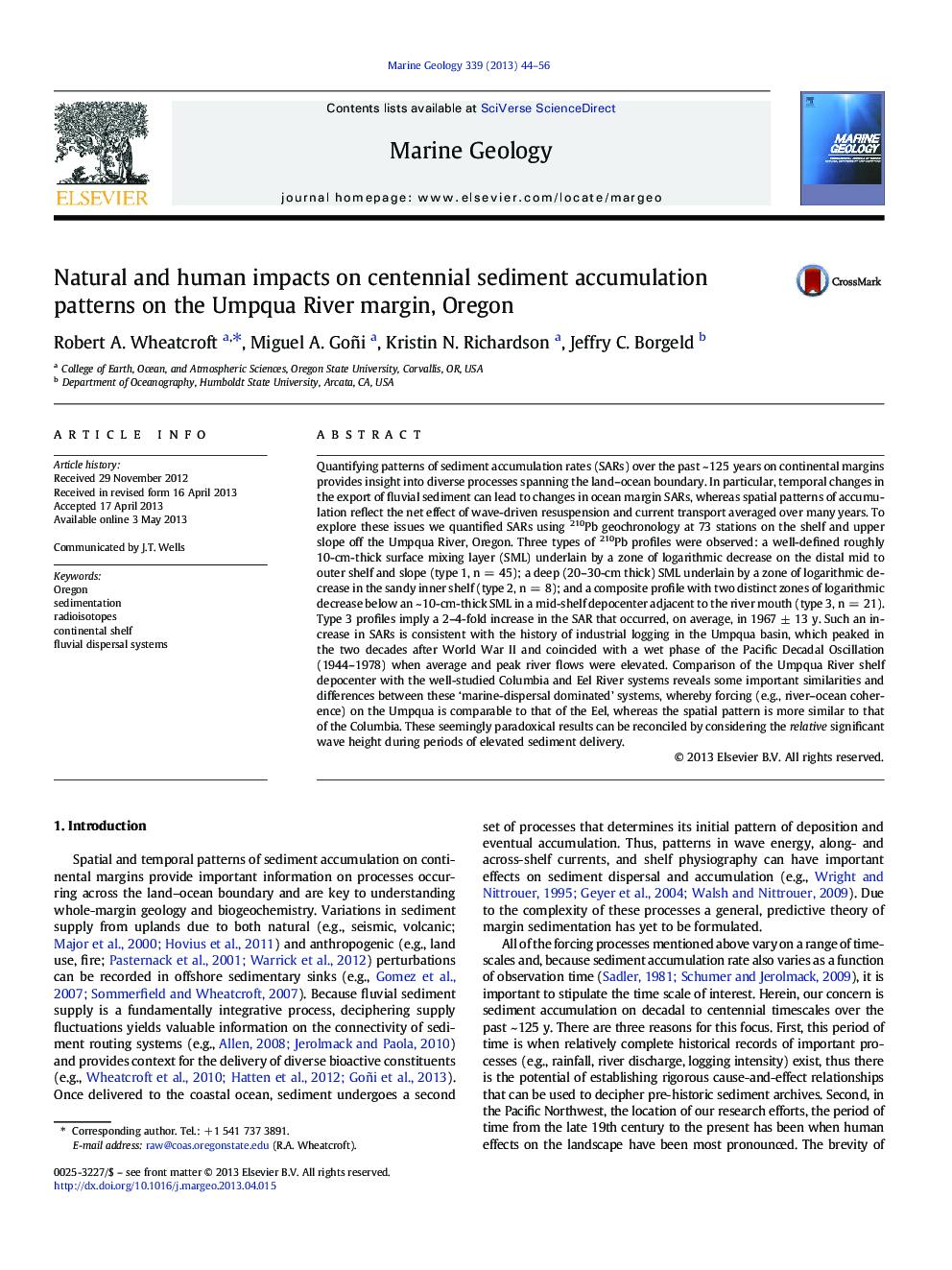| کد مقاله | کد نشریه | سال انتشار | مقاله انگلیسی | نسخه تمام متن |
|---|---|---|---|---|
| 4718491 | 1639113 | 2013 | 13 صفحه PDF | دانلود رایگان |
• Defined a mid-shelf mud deposit in water depths of 80–110 m
• Documented a 2–4-fold increase in sediment accumulation that began in the 1960's
• Related this increase to land-use and hydroclimatic changes in the river basin
• Compared the offshore depocenter to those off the Columbia and Eel Rivers
Quantifying patterns of sediment accumulation rates (SARs) over the past ~ 125 years on continental margins provides insight into diverse processes spanning the land–ocean boundary. In particular, temporal changes in the export of fluvial sediment can lead to changes in ocean margin SARs, whereas spatial patterns of accumulation reflect the net effect of wave-driven resuspension and current transport averaged over many years. To explore these issues we quantified SARs using 210Pb geochronology at 73 stations on the shelf and upper slope off the Umpqua River, Oregon. Three types of 210Pb profiles were observed: a well-defined roughly 10-cm-thick surface mixing layer (SML) underlain by a zone of logarithmic decrease on the distal mid to outer shelf and slope (type 1, n = 45); a deep (20–30-cm thick) SML underlain by a zone of logarithmic decrease in the sandy inner shelf (type 2, n = 8); and a composite profile with two distinct zones of logarithmic decrease below an ~ 10-cm-thick SML in a mid-shelf depocenter adjacent to the river mouth (type 3, n = 21). Type 3 profiles imply a 2–4-fold increase in the SAR that occurred, on average, in 1967 ± 13 y. Such an increase in SARs is consistent with the history of industrial logging in the Umpqua basin, which peaked in the two decades after World War II and coincided with a wet phase of the Pacific Decadal Oscillation (1944–1978) when average and peak river flows were elevated. Comparison of the Umpqua River shelf depocenter with the well-studied Columbia and Eel River systems reveals some important similarities and differences between these ‘marine-dispersal dominated’ systems, whereby forcing (e.g., river–ocean coherence) on the Umpqua is comparable to that of the Eel, whereas the spatial pattern is more similar to that of the Columbia. These seemingly paradoxical results can be reconciled by considering the relative significant wave height during periods of elevated sediment delivery.
Journal: Marine Geology - Volume 339, 1 May 2013, Pages 44–56
